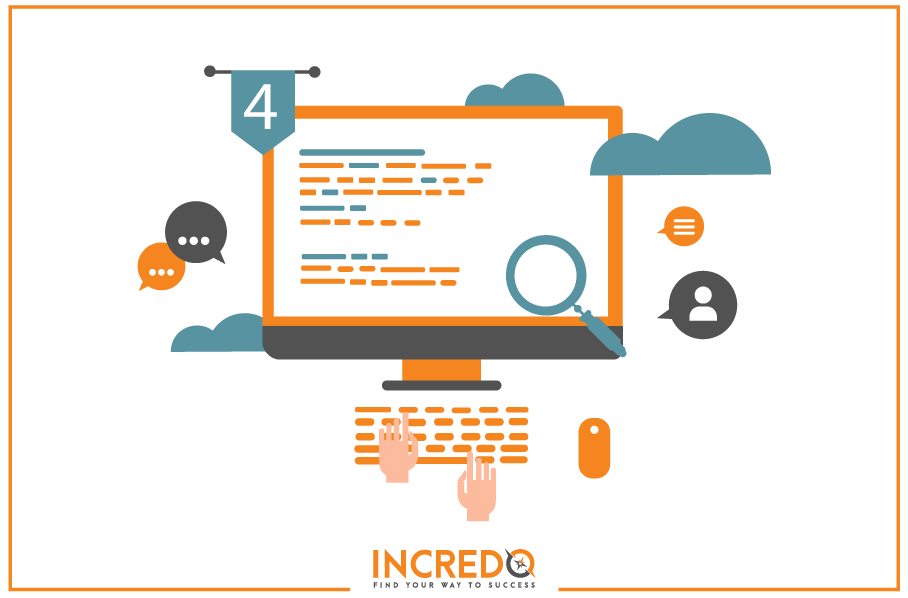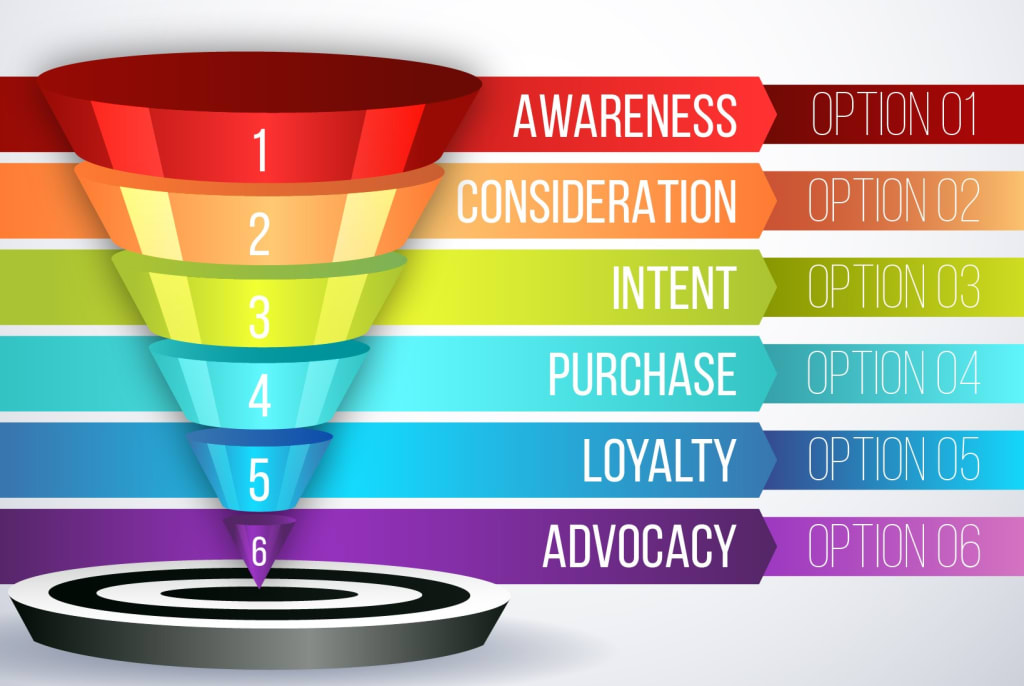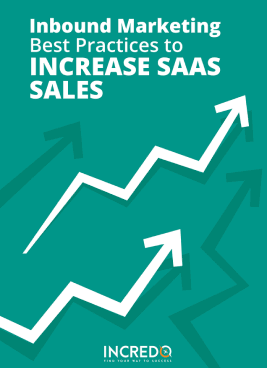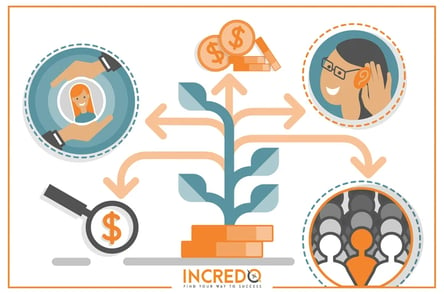How to Set Up and Optimize Your SaaS Sales Funnel So It Doesn’t Let You Down in 2021?

How to Set Up and Optimize Your SaaS Sales Funnel So It Doesn’t Let You Down in 2021?
Say you want to know how videos can help you increase the impact of your social media ads. You searched it on Google, found an article on a video software provider’s blog, and clicked on the headline. At the end of the post, you saw a freebie on a similar topic. You submitted your email address/phone number and downloaded that free resource. What just happened is that you entered another SaaS company’s sales funnel. Soon you will receive a welcome message, then another related resource and maybe case studies. And after a few days they will ask you to try their software for free. You can call it a classical scenario but it doesn’t have to be the best choice for you. If you read our today’s post, you’ll know 1) how to setup your SaaS marketing funnel, 2) what stages to include, and 3) how to get the most out of it.
Have trouble setting up and optimizing your SaaS conversion funnel? Let’s jump on a free call
How to setup your SaaS sales funnel?
image source Some SaaS companies tend to overcomplicate their SaaS buyer journey. They include too many stages or create endless email flows that delay conversion. For high-ticket B2B transactions, you might need more stages and regard your leads as MQL, SQL, opportunity, etc. But for low-price monthly packages, you need to keep it short and simple. Incredo knows how to optimize your SaaS sales funnel. Contact us. We have seen SaaS companies that have a simple product, rely on the power of a freemium plan and have low monthly fees. Their future customers don’t need much education about using the software. Monthly investment size isn’t big, so prospects don’t need much social proof either. We have also seen SaaS companies that invest thousands of dollars in lead magnets, create content on the benefits of their product, spend weeks in nurturing their leads. That’s because their product isn’t so easy to use, benefits aren’t so clear or monthly fees are above average. As you can see, your SaaS sales funnel stages depend on several factors, complexity of software, its benefits, pricing, etc, Each software company needs a unique sales cycle but there is one approach most of the companies follow. Let’s see how many stages the SaaS sales cycle usually includes:
Awareness – Consideration – Decision – Loyalty – Advocacy
 Awareness stage: Your visitor is asking questions and seeking information. He isn’t completely aware of the problems his company is facing and might not be looking for a specific solution yet. For example, if you are selling call center software, your awareness stage content may evolve around these topics: 1) Why is call tracking important? 2) How does cold calling work? 3) What is predictive dialing? Your visitor isn’t looking for software but his questions are closely to what your product actually does. To attract more awareness stage visitors, you need to create blog posts, videos, lead magnets (checklist, cheatsheet). Your content needs to be informative and educational. Consideration stage: Your visitor is already aware of a problem and is looking for advice, tips to solve it. Again if you are selling call center software, you may write on topics like: 1) How to increase call center closing ratio? 2) Why you need an auto dialer software? Consideration stage content may include promotional blog posts, case studies, FAQ, educational posts where you slightly talk about your software. Decision stage: Your visitor is already aware of the problem and even of the solution. He wants to know which provider offers the most relevant option. Your decision stage content should include case studies, comparison posts, user testimonials/reviews, success stories. If your visitor wants to know what is lead generation and downloads a cheatsheet, you shouldn’t immediately write an email, asking to try your lead generation software. This person needs to be educated about how lead generation works and then consider using your product. But if a person downloads your case studies deck, don’t hesitate to ask him try your software. He already is aware of the problem, solution, and thinks your product might be a good fit. Once you have your leads in each stage, you need to send history-based flows to connect with them and prepare for final conversion. Let’s have a look at an example. GTranslate is software that helps translate your website and make it multilingual. You can find both educational and promotional posts on their blog. The one below talks about the benefits of translating your website.Another blog post talks about how GTranslate can exactly help you receive a high-quality translation for your website.In the first case, the reader is aware of the problem – something is wrong with monolingual websites and multilingual ones provide more benefits. In the second case, the reader is aware that GTranslate can provide a solution and wants to learn more details. You may create similar blog posts for your software too. But don’t limit yourself only to posts and consider other types such as videos, pdf files, etc. But… reaching conversions and closing sales isn’t the end. New SaaS funnel starts to satisfy and retain the user and make him refer your software. Funnel ends not when the sale is closed but when your customer refers you. That’s why Decision stage is followed by 2 more stages – Loyalty and Advocacy. Your very last goal is to retain your user, try to upsell him (Loyalty), and do your best to get referred (Advocacy). In the next section, we are going to talk about how to optimize each stage of your funnel and make more visitors reach the advocacy stage.
Awareness stage: Your visitor is asking questions and seeking information. He isn’t completely aware of the problems his company is facing and might not be looking for a specific solution yet. For example, if you are selling call center software, your awareness stage content may evolve around these topics: 1) Why is call tracking important? 2) How does cold calling work? 3) What is predictive dialing? Your visitor isn’t looking for software but his questions are closely to what your product actually does. To attract more awareness stage visitors, you need to create blog posts, videos, lead magnets (checklist, cheatsheet). Your content needs to be informative and educational. Consideration stage: Your visitor is already aware of a problem and is looking for advice, tips to solve it. Again if you are selling call center software, you may write on topics like: 1) How to increase call center closing ratio? 2) Why you need an auto dialer software? Consideration stage content may include promotional blog posts, case studies, FAQ, educational posts where you slightly talk about your software. Decision stage: Your visitor is already aware of the problem and even of the solution. He wants to know which provider offers the most relevant option. Your decision stage content should include case studies, comparison posts, user testimonials/reviews, success stories. If your visitor wants to know what is lead generation and downloads a cheatsheet, you shouldn’t immediately write an email, asking to try your lead generation software. This person needs to be educated about how lead generation works and then consider using your product. But if a person downloads your case studies deck, don’t hesitate to ask him try your software. He already is aware of the problem, solution, and thinks your product might be a good fit. Once you have your leads in each stage, you need to send history-based flows to connect with them and prepare for final conversion. Let’s have a look at an example. GTranslate is software that helps translate your website and make it multilingual. You can find both educational and promotional posts on their blog. The one below talks about the benefits of translating your website.Another blog post talks about how GTranslate can exactly help you receive a high-quality translation for your website.In the first case, the reader is aware of the problem – something is wrong with monolingual websites and multilingual ones provide more benefits. In the second case, the reader is aware that GTranslate can provide a solution and wants to learn more details. You may create similar blog posts for your software too. But don’t limit yourself only to posts and consider other types such as videos, pdf files, etc. But… reaching conversions and closing sales isn’t the end. New SaaS funnel starts to satisfy and retain the user and make him refer your software. Funnel ends not when the sale is closed but when your customer refers you. That’s why Decision stage is followed by 2 more stages – Loyalty and Advocacy. Your very last goal is to retain your user, try to upsell him (Loyalty), and do your best to get referred (Advocacy). In the next section, we are going to talk about how to optimize each stage of your funnel and make more visitors reach the advocacy stage.
Further read: SaaS Lead Nurturing Made Easy: 5 Strategies to Hit Your Monthly Conversion Goals
Further read: SaaS Thank You Page Best Practices to Nurture and Convert Your Leads (+6 Examples)
How to optimize your SaaS sales funnel?
To check whether your funnel works or not, you need to set and track SaaS sales funnel metrics, mostly, lead to customer conversion rate, customer churn rate, customer lifetime value. You need to see which stage isn’t working and in which stage potential or existing customers start leaving you. If you get hundreds of leads but they don’t convert into paying users, you fail to educate them about your software and its value. If they reach free trial/demo but don’t convert, means your onboarding needs improvements. Your email flows are weak. If they become a paying subscriber but churn after a month or 2, means you failed to show the real value of your software. You didn’t provide with necessary materials. You didn’t track their engagement activities.
How to increase decision stage lead to customer conversion rate?
 As you can understand, your final goal is to make the prospect take the final action before submitting their credit card info. That final action may be to book a demo, request a quote, sign up for a freemium plan or a free trial. And without any of these final actions, your chances of getting a paying subscriber are almost slim to none. Decision stage leads are more educated and need more late-stage content. You can reconnect with them via different platforms and show them your user testimonials, success stories, and pricing options. In the decision stage, you are preparing your leads for a software purchase (subscription) and need to send more product-related content. In case of a freemium plan user, you may emphasize the limitations in the free plan and show how one would benefit from a paid plan. You also need to provide the user with free resources, tutorials so they don’t have trouble using your services. In case of free trial, you need to help the user succeed and use your product properly. Here again you should arm your user with materials on how to use your product, offer support via email or live chat. For both cases, don’t forget to send more customer reviews to tell how other users have benefited from your services. In case of product demos, you don’t need much nurturing as the demo call itself is enough for a prospect to make a final decision.
As you can understand, your final goal is to make the prospect take the final action before submitting their credit card info. That final action may be to book a demo, request a quote, sign up for a freemium plan or a free trial. And without any of these final actions, your chances of getting a paying subscriber are almost slim to none. Decision stage leads are more educated and need more late-stage content. You can reconnect with them via different platforms and show them your user testimonials, success stories, and pricing options. In the decision stage, you are preparing your leads for a software purchase (subscription) and need to send more product-related content. In case of a freemium plan user, you may emphasize the limitations in the free plan and show how one would benefit from a paid plan. You also need to provide the user with free resources, tutorials so they don’t have trouble using your services. In case of free trial, you need to help the user succeed and use your product properly. Here again you should arm your user with materials on how to use your product, offer support via email or live chat. For both cases, don’t forget to send more customer reviews to tell how other users have benefited from your services. In case of product demos, you don’t need much nurturing as the demo call itself is enough for a prospect to make a final decision.
How to help master your software and become satisfied customers
As mentioned before, closing the sale is not the end. It’s the beginning of a new challenge for your team. You need to do your utmost to satisfy your user and help him get value from your product. Of course, users reveal the actual value of your software during the first days of a trial or during a demo. But you need to prepare them to use your product daily, show more details, and help them become “fluent” in usin g your software. Some SaaS companies upload tutorials to Youtube (Ahrefs, SEMrush), others create entire courses (HubSpot, Marketo), others invest in worksheets, etc. Depending on how complex and diverse your product is, decide where to invest your money. A good idea is to rely on Help Centers, FAQs, email auto-responses and provide quick answers to support tickets. Here’s an example from Pure Chat. They promise to get back to the user asap and also include helpful links that might answer the user’s question.Here’s another example from Autopilot. Before the support team gets in touch, they ask to visit their Knowledge base or join a live demo. Great way to save the user’s time!
How to increase retention rate
#1 Track activity with a tool Nowadays you can find software that uses different algorithms to analyze user engagement. And if your subscribers don’t use your product daily or visit the Cancellation page, it’s a sign they are going to churn. The SaaS industry offers you tools that score users to see which ones are at risk of walking away. One example is MixPanel that offers a free plan and helps track 1,000 users monthly. #2 Contact and offer help Once you diagnose a problem, don’t waste even a minute to contact your users. Send a behavior-based message to know how you can help. #3 Initiate plan upgrades Maybe your customer isn’t benefiting from your product because of a missing feature. But that feature is available in your higher plan. Do your best to understand why your user is disappointed and offer a more advanced solution if you have. #4 Offer an annual plan Annual plans require firmer commitment from users. But you can offer a 15-20% discount to ensure your user will not leave you. The longer they stay with you, the closer they will get to your product and appreciate your service.
How to encourage referrals
Word of mouth marketing is a dream for business owners. And SaaS companies are not exception. As getting referred is one of your biggest goals, you need to make the referral process easy and enjoyable. A great way to encourage referrals is to offer a 10% discount or points when your user’s friend becomes a paying subscriber. You need to provide a special link that your user’s friend should use while signing up. Another way is to make it easy for users to send referral emails. “Think your friend or colleague will love using our software? Tell him/her about it.”. You can include similar CTA on your emails that you send to your existing users. Once they click “Click here to send them a quick email”, they can send a quick email to whoever they want. The email is pre-written and the sign-up link is already included. Your user only needs to enter the recipient’s email address and you got referred.
Once they click “Click here to send them a quick email”, they can send a quick email to whoever they want. The email is pre-written and the sign-up link is already included. Your user only needs to enter the recipient’s email address and you got referred.
Tips from 6 SaaS founders and marketing managers
#1 Pamela Bourgault Digital Marketing Strategist at DashThis, Digital Marketing and Social Media Reporting Platform
 “Our SaaS company’s funnel goes from a website visit to a free trial sign up to an upgrade. However, for leads with bigger potential, we assist them personally and go the extra mile with a 1-on-1 demo. We want to facilitate their experience with us and give them the best customer service possible. We help our customers every step of the way, from onboarding to giving them insight on key marketing metrics and KPIs. Templates and posts on our blog also help our users in their marketing activities and help strategize their business path.”
“Our SaaS company’s funnel goes from a website visit to a free trial sign up to an upgrade. However, for leads with bigger potential, we assist them personally and go the extra mile with a 1-on-1 demo. We want to facilitate their experience with us and give them the best customer service possible. We help our customers every step of the way, from onboarding to giving them insight on key marketing metrics and KPIs. Templates and posts on our blog also help our users in their marketing activities and help strategize their business path.”
#2 Yahong Zhang Marketing Manager at HapticMedia, 3D Configurator for eCommerce
 “We are a B2B SaaS in the luxury industry. Our sales funnel is working well, bringing us premium clients on a continuous basis. Here’s what it looks like:
“We are a B2B SaaS in the luxury industry. Our sales funnel is working well, bringing us premium clients on a continuous basis. Here’s what it looks like:
- Awareness stage. As for offline activities, we attend salons, forums, networking events. We focus on clients in big houses like Guerlain who introduced us to other brands in the LVMH group. We used to rely a lot on offline activities as a startup. But now we are doing online advertisement, SEO, blogging, guest blogging and social media. Among them SEO and link building give the best rewards. We are now the 3rd ranking result for our niche product.
- Consideration stage. We use marketing automation to send informative content, namely whitebooks and detailed real-world case studies. The latter is regarded as the most convincing content for B2B clients.
- Purchase stage. We offer both auto purchase and 1 on 1 communication.”
#3 Daniil Kopilevych Growth Manager at HelpCrunch, Customer Communication Platform
 “At HelpCrunch we have 2 different funnel models: – Self-service funnel (low to no touch model) – Sales funnel (mid to high-touch model)
“At HelpCrunch we have 2 different funnel models: – Self-service funnel (low to no touch model) – Sales funnel (mid to high-touch model)
- Self-service funnel (which we aim to make us 95% of customers and MRR) consists of the following stages: 0. Visitor 1. Trial user 2. Paid customer
- SaaS sales funnel (mostly for outbound leads) consists of more stages: 0. Outbound prospect / visitor 1. Chat / sales demo lead 2. Trial user 3. Migration assistance (when leads are switching from competitors’ tools) 4. Closed WON/LOST (Paid customer / canceled)
Have trouble setting up and optimizing your SaaS conversion funnel? Let’s jump on a free call < /h3>
#4 Natalie Marcotullio Marketing Director at Map My Customers, Mobile Sales CRM
 “At Map My Customers, we operate on a B2B model. Our website visitors are marked as Marketing Qualified Leads (MQL). Inbound MQLs move to the next stage of the marketing funnel via an automated lead scoring system setup. If they are scored high enough, they eventually move to our sales funnels. Visitors are scored by the amount of high value actions they take on our website (visiting the pricing page, number of visits, etc). If they become an SQL1, they are sent to BDRs via an automated Slack trigger. Thus, they reach our prospecting funnel. Our prospecting SaaS funnel is broken down into Sales Qualified Leads (SQL) across tiers 1-4. Once they have booked a second demo, the prospect will move to our opportunity pipeline which consists of the following: 1) DM Buy-in 2) Proven Value 3) Negotiating 4) Forecast 5) Closed Won 6) Closed Lost For the most part, the lead scoring has proved more effective in qualifying leads than previous efforts. Automation efforts allow our BDRs access to inbound leads quickly while we are still relevant to them. As a B2B business, however, we can’t always qualify visitors based on their website actions. So our plan B requires a longer, more involved sales process including aggressive ICP outbound efforts to fill our funnels.”
“At Map My Customers, we operate on a B2B model. Our website visitors are marked as Marketing Qualified Leads (MQL). Inbound MQLs move to the next stage of the marketing funnel via an automated lead scoring system setup. If they are scored high enough, they eventually move to our sales funnels. Visitors are scored by the amount of high value actions they take on our website (visiting the pricing page, number of visits, etc). If they become an SQL1, they are sent to BDRs via an automated Slack trigger. Thus, they reach our prospecting funnel. Our prospecting SaaS funnel is broken down into Sales Qualified Leads (SQL) across tiers 1-4. Once they have booked a second demo, the prospect will move to our opportunity pipeline which consists of the following: 1) DM Buy-in 2) Proven Value 3) Negotiating 4) Forecast 5) Closed Won 6) Closed Lost For the most part, the lead scoring has proved more effective in qualifying leads than previous efforts. Automation efforts allow our BDRs access to inbound leads quickly while we are still relevant to them. As a B2B business, however, we can’t always qualify visitors based on their website actions. So our plan B requires a longer, more involved sales process including aggressive ICP outbound efforts to fill our funnels.”
#5 Jacek Wieczorek Co-founder at Pulno, Website SEO Audit Tool
 “We follow the pattern of Awareness, Interest, Decision, and Action. The first step for us is to get the attention of a potential customer. We are trying to reach out through social media posts on Twitter or Facebook. In the next step, we are trying to arouse the potential customer’s interest. For example, we suggest scheduling an online demonstration. We show what our tool can do and how the user could benefit from it. We also offer a free plan so that people can check our app by themselves. To facilitate the decision to buy, we have enhanced the paid plans with additional, unique features. On top of that, we try to meet the needs of all of our users, even those who do not have extensive SEO knowledge. On our blog, we publish articles explaining the features of our tool and tutorials on how to use it to improve website’s quality. We regularly send newsletters announcing new features we implemented or articles on the blog. Last but not least, we added hints and explanations in tooltips in the program itself.”
“We follow the pattern of Awareness, Interest, Decision, and Action. The first step for us is to get the attention of a potential customer. We are trying to reach out through social media posts on Twitter or Facebook. In the next step, we are trying to arouse the potential customer’s interest. For example, we suggest scheduling an online demonstration. We show what our tool can do and how the user could benefit from it. We also offer a free plan so that people can check our app by themselves. To facilitate the decision to buy, we have enhanced the paid plans with additional, unique features. On top of that, we try to meet the needs of all of our users, even those who do not have extensive SEO knowledge. On our blog, we publish articles explaining the features of our tool and tutorials on how to use it to improve website’s quality. We regularly send newsletters announcing new features we implemented or articles on the blog. Last but not least, we added hints and explanations in tooltips in the program itself.”
#6 Gaurav Sharma Founder and CEO at JustCall, Cloud Phone System
 “Here’s what out stages our SaaS sales funnel includes:
“Here’s what out stages our SaaS sales funnel includes:
Lead Stage: New customers land on our website and are captured as lead via our website chatbot.
Our chat folks do the basic screening and requirement gathering and tag that person as the lead. As soon as the tag is added, we create an entry for that lead in our Sales CRM. At this stage, we have an email sequence and contact the lead after 24 hrs, 3rd day and 7th day.
Demo stage: Our demo to conversion ratio is high (>60%). So our goal is to move lead stage folks to demo stage at the earliest. Once the demo is scheduled, after 18 minute (very specific number!) we send an email asking about the requirements of the user: a) team size b) CRM they use c) use case (sales or support).This helps us in providing a great demo. After the demo, there is again an email sequence in place to push users to signup.
Signup Stage: Users either sign up after the demo or via our email sequence mentioned above. Here, there is again an email sequence that pushes them to convert into a paying customer. We offer free training & support for their team.
Conversion Stage: As soon as the user converts into a customer (pays for the first month), we move him to our Customer Success funnel. We are using this funnel for the last 3 years and it has single-handedly helped us grow > 1350%.”
What did you learn from our post? How is your SaaS sales funnel constructed? INBOUND MARKETING BEST PRACTICES TO INCREASE SAAS COMPANY’S SALES DOWNLOAD YOUR E-BOOK
INBOUND MARKETING BEST PRACTICES TO INCREASE SAAS COMPANY’S SALES DOWNLOAD YOUR E-BOOK
Tags:
SaaS Sales
July 14, 2020

![Do SaaS Affiliate Programs Work in 2024? [+7 Related Stories from SaaS People]](https://incredo.co/hs-fs/hubfs/Frame%2019-Jun-19-2024-11-43-24-4592-AM.png?width=520&height=294&name=Frame%2019-Jun-19-2024-11-43-24-4592-AM.png)

Comments